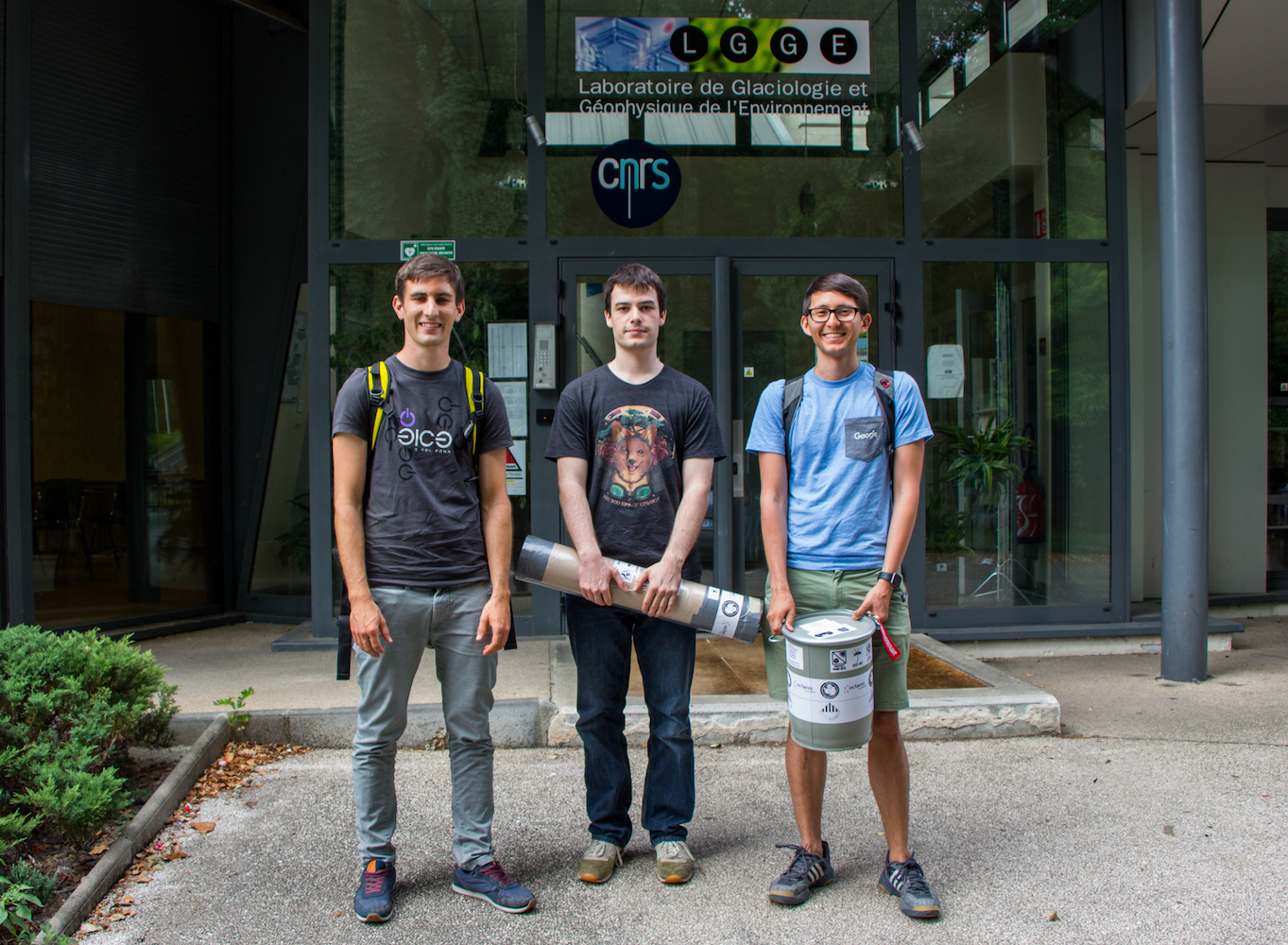Posted by Raffael on July 28, 2016.

Last Friday, part of the Octanis team went to the «Laboratoire de Glaciologie et Géophysique de l’Environnement (LGGE)», the Glaciology and Geophysics Lab in Grenoble, France. Kindly received by Laurent Arnaud, a research engineer specialized in the characterization of snow, we handed over the batteries and other bulky material needed for the upcoming rover mission in the end of this year. Laurent and his team will be in Antarctica for a several month-long research trip starting mid-November and they agreed to take along the Octanis Rover to conduct on-site experiments and tests with it.
To transport the researcher’s equipment - stored in hundreds of rugged and heavy boxes - to the Southern Continent, a cargo ship has left France last Monday and will arrive in October in Tasmania, Australia. There it will be charged with remaining material that is transported via air freight, and then leave for its final destination: the station Dumont d’Urville that is located on an island 5 km from the Antarctic continent.
Currently being in the final assembly and pre-testing phase, we will bring the complete rover and base station to Grenoble in September to be air-shipped to Tasmania. Until then, we want to make sure that all sub-systems work smoothly together and the rover produces a good 3D scan of the ground.
The glaciologists are very interested in measuring the roughness of the snow (so called Sastrugis), so we mounted a laser scanner on the rover which, pointing to the ground, will allow us to collect this information. An alternative solution currently used by the LGGE researches is a stationary 360° laser scanner, having the drawback of the limited covered area. It will be very exciting to compare the data of both methods, but high accuracy is not necessarily the main goal of the mission. «It will be very interesting for us to see what works well and what doesn’t», says Laurent and adds: «When carrying out our research projects, we always use the tools and methods which we know support those extreme conditions, because we can’t take the risk of something suddenly not working in the field.» Octanis’ very low-cost and maybe unconventional approach is therefore an opportunity to explore new technical solutions for future projects.

The next trip to Grenoble in September with the final delivery will also serve as demonstration and introduction of the rover to the field operators. For this time, we used the remaining time of the day to visit the town center, charmingly located at the foot of the French Alps and embedded between the two rivers Isère and Drac.
Photos by Sofia Oliveira